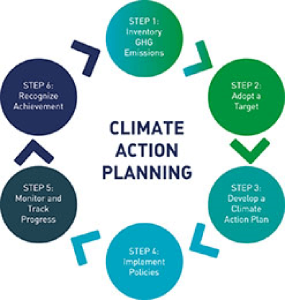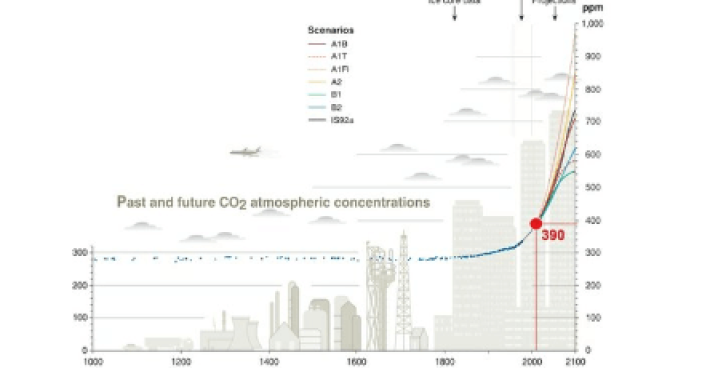Climate Action Plans identify a set of strategies intended to guide local government or community efforts in reducing greenhouse gas emissions. Generally, these strategies focus on improving energy efficiency and conservation in homes and businesses—the sources of nearly three-fourths of local emissions. When effectively established, these plans identify how local governments and the broader community can reduce greenhouse gas (GHG) emissions by identifying emission reduction targets, strategies, and specific actions. By establishing Climate Action Plans, it can be presumed that a project will not have significant GHG emission impacts as long as the project is consistent with adopted legally-qualified GHG reduction strategies. However, that is if the plans can effectively satisfy the California Environmental Quality Act (CEQA).
On April 29, 2013, Superior Court Judge Taylor ruled on Sierra Club vs. County of San Diego, with Sierra Club having filed suit against the County’s Climate Action Plan. County supervisors unanimously approved the action plan on June 20, 2012, indicating it was designed to spur “mixed-use” developments to encourage people to drive less, drive in carpools, increase energy efficiency retrofits of older buildings, and boost use of alternative energy sources especially for purposes which excessively use energy such as using energy from solar panels to heat water. The Plan was crafted to comply with Assembly Bill 32, the California Global Warming Solutions Act of 2006, which requires GHG emissions statewide to be reduced to 1990 levels by 2020.
Judge Taylor ruled for the Sierra Club, holding that the County’s Climate Action Plan failed to be adopted in a manner required by law. Even if it were properly adopted, there was not substantial evidence that the Climate Action Plan satisfied the mitigation requirements of the Programmatic EIR for the General Plan Update of 2011. The first requirement that the Programmatic EIR demands is for the Climate Action Plan to include more detailed GHG reduction targets and deadlines. The Programmatic EIR also requires comprehensive and enforceable GHG emissions reduction measures that will achieve a 17% reduction in emissions from County operation and a 9% reduction in community emissions between 2006 and 2020. Lastly, progress must be monitored to meet the requirements of the Programmatic EIR for the General Plan Update of 2011. The court ordered that the San Diego Climate Action Plan be set aside for the time being while San Diego thinks about filing an appeal.
This is the second case of its kind before the San Diego Superior Court in the last six months – Cleveland National Forest Foundation filed suit against the regional transportation plan issued by San Diego’s regional planning agency (SANDAG). In the said case, which is now on appeal, Judge Taylor ruled that SANDAG’s transportation plans for the following decades did not properly address greenhouse gas emissions. These cases bring to light not only the benefits of establishing Climate Action Plans, but also the importance of establishing effective and legally defensible Climate Action Plans.
CEQA Guidelines Section 15183.5 outlines Tiering and Streamlining the Analysis of Greenhouse Gas Emissions. In particular, for a Climate Action Plan to satisfy CEQA Guidelines, the Plan should:

-
- Quantify greenhouse gas emissions, both existing and projected over a specified time period, resulting from activities within a defined geographic area;
- Establish a level, based on substantial evidence, below which the contribution to greenhouse gas emission from activities covered by the plan would not be cumulatively considerable;
- Identify and analyze the greenhouse gas emissions resulting from specific actions or categories of actions anticipated within the geographic area;
- Specify measures or a group of measures, including performance standards, that substantial evidence demonstrates, if implemented on a project-by-project basis, would collectively achieve the specified emissions level;
- Establish a mechanism to monitor the plan’s progress toward achieving the level and to require amendment if the plan is not achieving specified levels;
- Be adopted in a public process following environmental review.
(Reference: Guidelines for Implementation of the California Environmental Quality Act)
For the purposes of this case, it appears that San Diego’s Climate Action Plan failed to satisfy element (5). Even if element (5) were satisfied, the Plan still failed to identify performance measures in (4). The Plan describes itself as a “living document” and a platform for the County to “build strategies to meet its emissions reduction targets.” While the County argued that the record demonstrates the viability of strategy development to meet emission reduction targets, in his ruling, Judge Taylor noted that hundreds of thousands of San Diegans living in low-lying areas—and are therefore susceptible to rising sea levels—cannot afford to wait for strategies to be developed.
As businesses and local governments continue to grapple with climate change through the reduction of greenhouse gases, FirstCarbon Solutions can offer advice and assistance with projects. Our team can help strategize how best to comply with the latest greenhouse gas guidance and carbon management to meet greenhouse gas emissions goals. Click on the button below to request a consultation.





